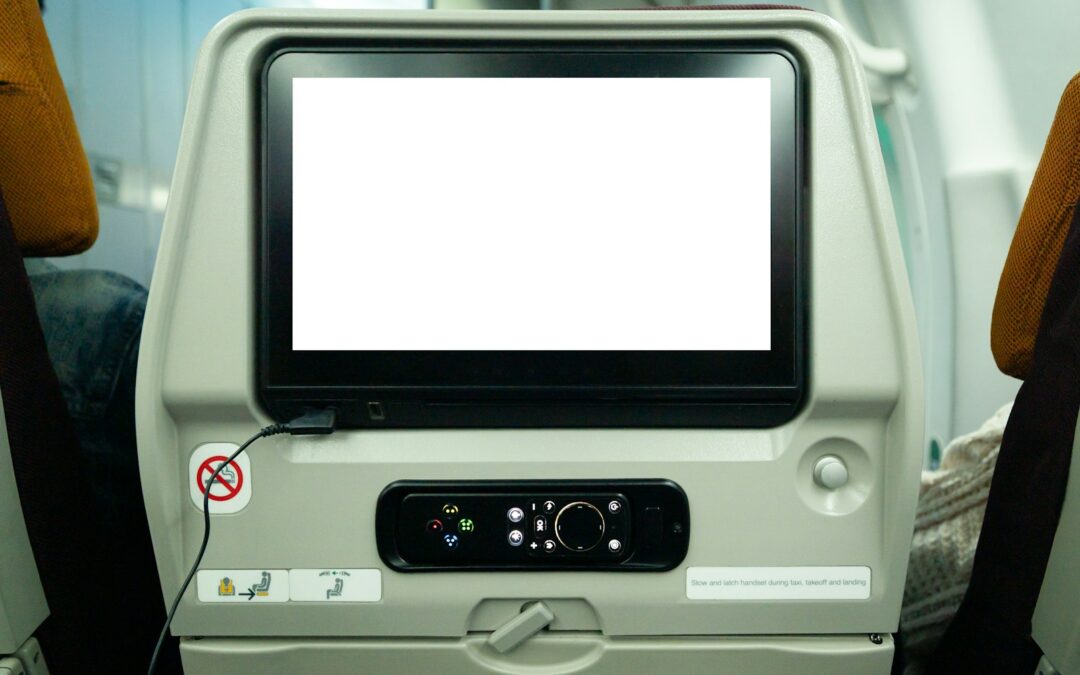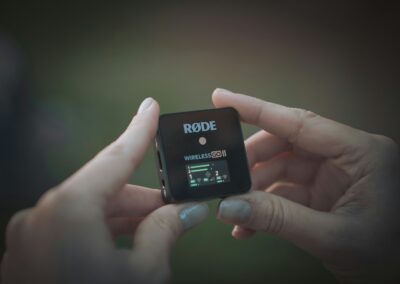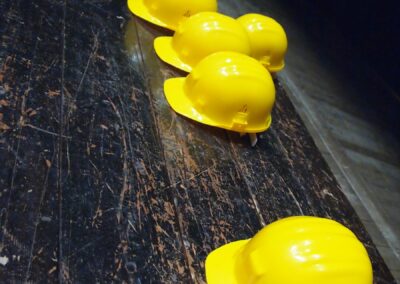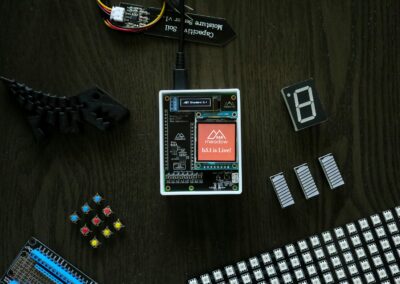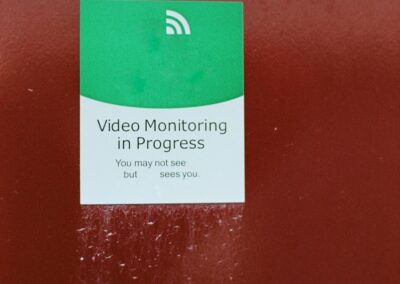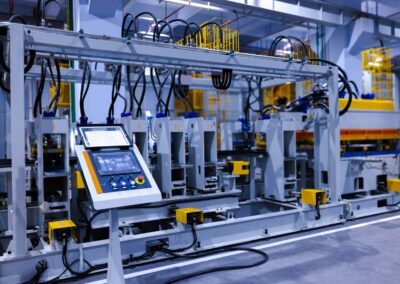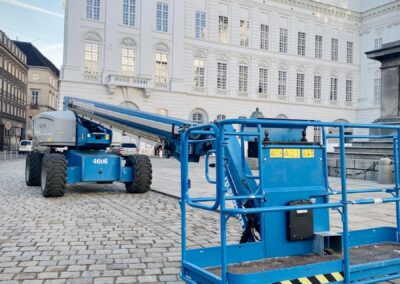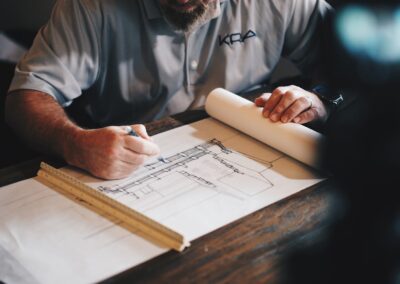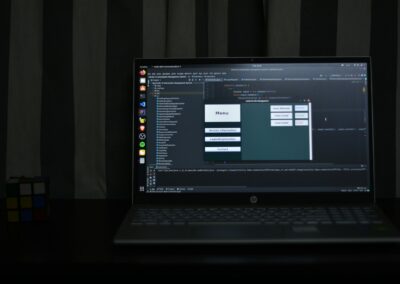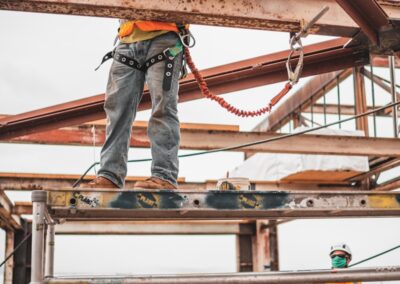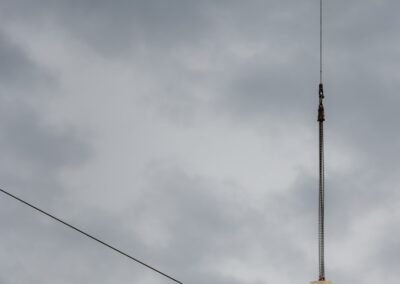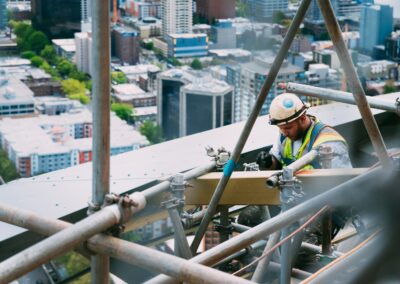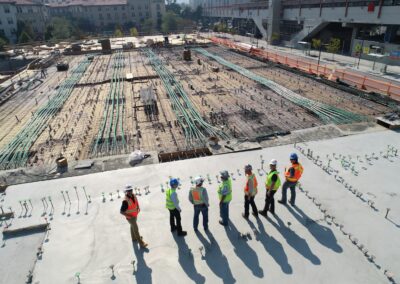Leveraging Advanced Technology for Safer Construction Practices
Introduction: The Role of Digital Twins in Construction Safety
The use of digital twins for real-time monitoring can enhance safety on construction sites by identifying and mitigating risks before they escalate. Digital twins are sophisticated virtual models of physical assets, processes, or systems that allow for continuous monitoring and analysis. In the construction industry, these digital replicas offer unprecedented insights into site conditions, enabling proactive safety management.
In rapidly developing regions such as Saudi Arabia and the UAE, cities like Riyadh and Dubai are at the forefront of adopting digital twin technology to improve construction safety. This article explores how digital twins can transform safety protocols on construction sites, reducing risks and enhancing overall project management.
Real-Time Monitoring: A Game Changer for Construction Safety
Digital twins provide a dynamic, real-time view of construction sites, allowing for continuous monitoring and analysis of various safety parameters. By integrating data from sensors and IoT devices, digital twins create a comprehensive model that reflects current site conditions. This capability enables construction managers to detect potential hazards and address them promptly.
In Riyadh and Dubai, digital twins are being used to monitor critical safety aspects such as structural integrity, equipment performance, and environmental conditions. For example, sensors embedded in scaffolding can detect instability, triggering immediate alerts to prevent accidents. Similarly, monitoring systems can track machinery usage and maintenance needs, ensuring that equipment is always in optimal condition.
Moreover, digital twins facilitate better communication and collaboration among stakeholders. By providing a shared, up-to-date view of the site, project managers, safety officers, and workers can work together more effectively to maintain a safe environment. This collaborative approach ensures that everyone is aware of potential risks and can take appropriate actions to mitigate them.
Identifying and Mitigating Risks Proactively
One of the most significant advantages of digital twins is their ability to identify and mitigate risks before they escalate. By analyzing real-time data, digital twins can predict potential safety issues and suggest preventive measures. This proactive approach to risk management is crucial in construction, where unforeseen hazards can lead to severe accidents and project delays.
In cities like Riyadh and Dubai, where construction activity is intense, digital twins are essential for maintaining high safety standards. For instance, digital twins can simulate various scenarios to identify potential weak points in the construction process. This simulation capability allows project managers to test different safety strategies and choose the most effective ones.
Furthermore, digital twins can monitor environmental factors such as weather conditions and air quality, which can impact construction safety. By providing real-time updates on these factors, digital twins enable construction teams to adjust their activities accordingly, reducing the risk of accidents caused by adverse conditions. For example, if a digital twin detects that strong winds are expected, it can alert the team to secure loose materials and equipment, preventing them from becoming hazards.
Enhancing Training and Compliance with Digital Twins
Digital twins are also valuable tools for enhancing safety training and ensuring compliance with safety regulations. By creating realistic virtual environments, digital twins can be used to simulate various safety scenarios and train workers on best practices. This hands-on training approach is more effective than traditional methods, as it allows workers to experience and respond to potential hazards in a controlled setting.
In the UAE and Saudi Arabia, construction companies are using digital twins to improve their safety training programs. For example, digital twins can simulate emergency situations such as fires or structural collapses, teaching workers how to respond quickly and effectively. This training helps to build a culture of safety, where workers are well-prepared to handle potential risks.
Moreover, digital twins can be used to monitor compliance with safety regulations. By continuously tracking safety parameters, digital twins ensure that construction sites adhere to local and international safety standards. This compliance monitoring is particularly important in regions like Riyadh and Dubai, where regulatory frameworks are stringent and construction projects are subject to rigorous inspections.
Conclusion: Leading the Way to Safer Construction Practices
The use of digital twins for real-time monitoring represents a significant advancement in construction safety. By providing continuous, real-time insights into site conditions, digital twins enable proactive risk management and enhance overall safety protocols. As cities like Riyadh and Dubai continue to embrace technological innovations, the integration of digital twins with AI and IoT will drive substantial improvements in construction safety.
Business executives, mid-level managers, and entrepreneurs must recognize the potential of digital twin technology and explore how it can be leveraged to achieve safer construction outcomes. By staying at the forefront of this technology, organizations can position themselves as leaders in construction safety and contribute to the overall well-being of their communities.
#DigitalTwins #RealTimeMonitoring #ConstructionSafety #RiskMitigation #SaudiArabia #UAE #Riyadh #Dubai #ArtificialIntelligence #Blockchain #ExecutiveCoaching #GenerativeAI #ModernTechnology #BusinessSuccess #LeadershipSkills #ProjectManagement

